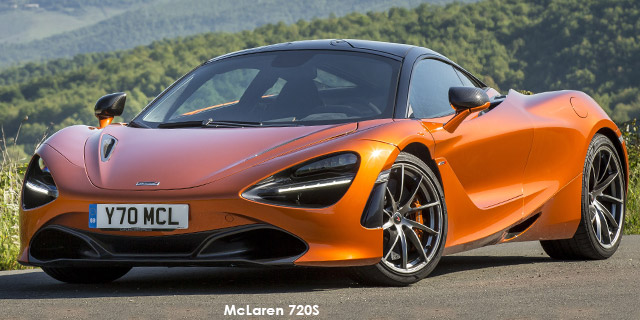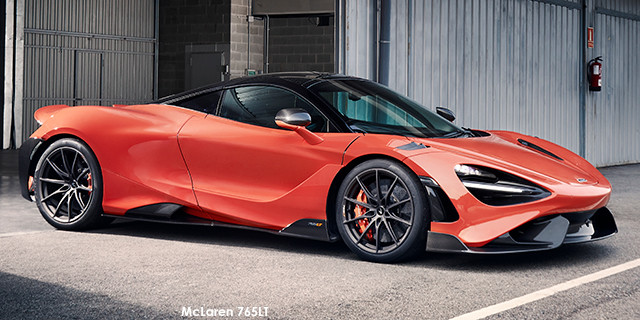This is the quickest supercar we have ever tested. It also happens to be one of the most accessible and playful…
Astute CAR readers may have already raised an eyebrow at that intro blurb proclaiming the 720S the quickest vehicle we’ve ever configured in our rigorous performance-testing programme. There’s a caveat, yes, and it’s this: with a 0-100 km/h time of 3,09 seconds, the rear-wheel-drive McLaren is beaten by the all-wheel-drive Audi R8 V10 Plus, which posted an astounding figure of 3,03 seconds on our test strip when we tested it in September 2016 (and it dipped below the three-second mark during Performance Shootout 2017, but that was on a grippier surface elsewhere and, for reasons of fairness and equal comparison, we’ll leave that time out of this argument).
What we mean is the McLaren leaves absolutely everything behind in-gear, by margins that may not look large on paper, but in reality are veritable gulfs. This thing is staggeringly quick. It takes just 1,31 seconds to race from 60 to 100 km/h. From there to 140 km/h? 1,62 seconds. But how does that feel in real life? Like this: spot a gap in traffic on a flowing country lane, gently squeeze the throttle and what was before is suddenly a speck in the rear-view mirror. The driver of a 720S is quicker than 95% of other road users on 20% throttle travel. The brand-new 4,0-litre, mid-mounted V8 barely stirs before your right foot eases off the loud pedal.
A train of five cars? You’re past them in a blink. What happens, though, when the road ahead is clear, the surface is dry and the driver feels brave enough to use the other 80% of travel? Acceleration so ferocious, one CAR tester described it as painful. Imagine, if you will, your organs enveloping your spine while nerves in your hands prickle with sensation as the hydraulically assisted steering communicates the road’s minute surface details and your ears absorb what is (finally) a melodious McLaren V8.
This is the 720S. Before we get too carried away, let’s revisit some background: replacing McLaren Cars in 2010, McLaren Automotive launched its first series-production car, the MP4-12C, in 2011. Three years later, the 650S debuted, followed by the 675LT and now the 720S.
Those vehicles constitute McLaren’s mid-tier Super Series range, book-ended by the Sports Series (think 570S) and Ultimate Series (of which the new Senna is the flag bearer following production completion of the limited-edition P1).
Effectively, the 720S replaces the 650S, with a long-tail version on the cards to take over the mantle from the more focused 675LT. Featuring 41% new components over the widely used 3,8-litre, the heart of the 720S is a 4,0-litre twin-turbocharged V8. It produces 527 kW (giving it another CAR record: most powerful series-production rear-wheel-drive vehicle we’ve ever road-tested) at 7 000 r/min, and 770 N.m at 5 500 r/min, channelled to the rear wheels (wearing bespoke Pirelli P Zeros) via a dual-clutch transmission
The engine sits inside a new carbon-fibre chassis called Monocage II. Whereas before, the backbone of Super Series cars was a carbon tub, on the 720S this extends to an upper structure (the frame of the windscreen, which has an added benefit in that the pillars are slim and therefore aid vision outward) and chassis surround. That, says McLaren, makes it stronger but lighter than the one in the 650S because it used less steel in the construction. In fact, despite being the most powerful, this is also the lightest Super Series model yet; on our scales and fully fuelled, the vehicle registered 1 454 kg, 13 kg lighter even than a 570S.
The double-wishbone suspension, meanwhile – Proactive Chassis Control II, featuring a hydraulically interlinked damper system that negates the need for anti-roll bars – is 16 kg lighter. Thanks to 12 extra sensors, the system can analyse a situation and control the suspension to react in a mere two milliseconds.
Open one of the dihedral doors – which no longer have ducting for air to feed the engine; that’s taken care of by the inlets in those opinion-splitting front headlamps – that cut into the roof, prepare to origami yourself into the bucket seats before realising that’s unnecessary because this is the easiest McLaren yet to clamber into, and your environment is instantly familiar yet wholly new. The driving position is still unmatched in any car, with the brake pedal equidistant to each foot and the steering column adjustable through a vast range.
The centre stack features a new infotainment system comfortably eclipsing the old IRIS setup for user-friendliness, and to the right of this fixed tablet sits McLaren’s drive controls that allow tweaking of the suspension and drivetrain through comfort, sport and track.
Thumb the starter button – if the settings are in track mode, the revs flare before the exhaust system emits a walloping crack – press D, ease off and the 720S feels, well … tame. With the nose hydraulically lifted to clear speed humps, the various settings in their softest modes – no supercar maker has a better grasp on ride comfort than McLaren – and the transmission left to its own devices in auto, this 341 km/h supercar is no more intimidating to guide into early-morning rush-hour traffic than a Porsche 911.
The view past the bare carbon-fibre A-pillars is expansive, over-the-shoulder vision is better than in some new-fangled crossovers and the engine responds smoothly to inputs however low the revs. In fact, only two things concern the driver at this point: the R6-million price-tag; and other road users’ flagrant disregard for road rules as they hit record on their smartphones while the low-slung McLaren threads its way through traffic.
If by this stage of this feature you’re starting to think we’re being coy with our impressions of how the 720S actually drives, forgive us: during its two days spent with the CAR team, it rained a lot of the time and there were precious few opportunities to stretch the McLaren’s legs (or even to see if the Variable Drift Control setting for the traction system safely lets out the rear-end as much as McLaren promises it does).
What we can tell you is this: despite its monstrous performance, the 720S is as easy to instantly drive quickly as few performance cars we’ve tested. Thanks to an exquisitely organic steering system, placing the front wheels inch-perfect in a corner feels like the most natural thing on earth. Loaded up in a bend, the vehicle’s attitude is surprisingly playful, allowing the driver to tweak its balance with the throttle to rein in slight understeer.
Hit a hump mid-bend and the vehicle stays its course. Exit the bend and the traction control condones the merest wiggle before briefly skimming power and then hurtling the car to the next turn. The 720S invites you in; it coaxes you into pushing it harder. But, crucially, it’s never intimidating because there’s always the knowledge that, when you reach the heights of your diving talent, you’ve barely scratched the surfaces of its abilities.
TEST SUMMARY
We know R6,0-million is a monumental number and that, frankly, a R4,0-million 570S — or, for that matter, a R3,0-million Porsche 911 GT3 — has 90% of the 720S' charisma, uniqueness and talent. Do we care, though? Not one bit. The 720S is a towering achievement from a firm that's been building cars in this vein for less than a decade. Just imagine what it'll do in the next eight years...
*From the June 2018 issue of CAR magazine
ROAD TEST SCORE

|

|
Original article from Car










